With an inquest set to begin March 29, Sarah Fitch of Port Townsend hopes she may begin to understand why a Seattle police officer shot her son to death early on July 17, 2015.
“From Sarah's …
This item is available in full to subscribers.
We have recently launched a new and improved website. To continue reading, you will need to either log into your subscriber account, or purchase a new subscription.
If you had an active account on our previous website, then you have an account here. Simply reset your password to regain access to your account.
If you did not have an account on our previous website, but are a current print subscriber, click here to set up your website account.
Otherwise, click here to view your options for subscribing.
* Having trouble? Call our circulation department at 360-385-2900, or email our support.
Please log in to continue |
|
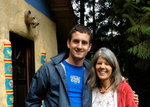

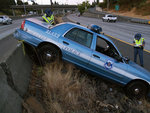
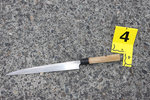


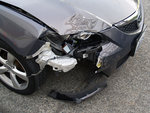
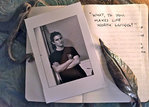
With an inquest set to begin March 29, Sarah Fitch of Port Townsend hopes she may begin to understand why a Seattle police officer shot her son to death early on July 17, 2015.
“From Sarah's perspective as a mother who lost her child, she wants to have answers as to what was the officer trained to do when dealing with an individual such as her son; she wants to know what kind of training officers get,” said Fitch's attorney, Sunitha Anjilvel.
After the Seattle Police Department (SPD) forwarded the results of its investigation to the King County prosecutor in October 2015, the prosecutor recommended an inquest, which is a fact-finding hearing conducted by a six-member jury and a King County District Court judge. On Oct. 29, 2015, King County Executive Dow Constantine ordered the inquest.
Samuel Toshiro Smith, 27, was shot three times by SPD officer Shaun Hilton, 35, in the 6500 block of Ravenna Avenue in Seattle about 40 minutes after striking an SPD patrol car from behind while traveling southbound on Interstate 5 at about 4 a.m., July 17.
In October 2015, Fitch told the Leader a toxicology report from the King County Medical Examiner's Office showed Smith had a blood-alcohol content of 0.26 as well as 0.25 mg/L of cocaine in his blood. Autopsy and toxicology reports are available only to family of the deceased.
During his six-second interaction with Hilton, who approached Smith without backup, Smith did not speak, according to police records. Instead, Smith clutched a 10-inch knife as he walked barefoot toward Hilton, who retreated, drawing his gun and yelling, “Drop the knife.”
Anjilvel said she plans to question the amount of time between Hilton's command and his opening fire.
“I definitely think the length of the warning is going to be a specific point of interest in this case,” said Anjilvel, who said two seconds passed, at most. “I think saying two seconds is actually being generous.”
Anjilvel also said Smith's death at the hands of police can be compared to that of Seattle woodcarver John T. Williams in August 2010. Although the SPD's Firearms Review Board ruled that shooting unjustified, the prosecutor declined to charge the officer, and the SPD settled with Williams' family out of court. That case also spurred a U.S. Department of Justice investigation of the SPD.
“I think there is a connection between the two cases,” she said, adding that Smith was one of 1,204 people in the U.S. killed by police in 2015. “It's timely that we all take a look at what is happening with our police departments and what they are trained to do.”
Upon learning of his death, Smith's friends, family and coworkers in Seattle and Port Townsend remembered him as an able musician, a skilled sushi chef and a caring, compassionate friend.
Smith grew up in Port Townsend, where he worked in local kitchens, played in local bands and graduated Mar Vista Alternative High School in 2006 before moving to Seattle about five years later.
Smith had been living in Northgate and managing sushi operations at ’Ohana in Belltown. During the months prior to his death, Smith had reportedly been working nearly 80 hours a week in an effort to open the restaurant's new Issaquah location. July 16 was his first day off in six weeks, according to the restaurant's owner.
Many who knew Smith were left wondering why he was driving on the interstate at 4 a.m., why he wielded a knife when approached by an officer, and why the officer might have shot to kill.
INVESTIGATION, INCIDENT
On the same day Constantine ordered the inquest, the Port Townsend & Jefferson County Leader filed a Public Records Act request with the SPD for all case investigation materials. The first of several installments came four months later in early March, with several more still to come. The Leader has since reviewed photos, reports and witness interviews conducted by the SPD's Force Investigation Team in the initial days and weeks following the shooting.
James Wilson, 33, of Arlington was driving to work on southbound I-5 when he noticed a gray 2007 Mazda sedan get on the interstate at the exit 173 on-ramp at an estimated 85 mph or more.
Wilson said the car passed him and sped out of sight before slowing enough for Wilson to catch up. Then, from the far left lane, the car turned sharply to the right, crossing all lanes and missing other nearby vehicles before striking a marked SPD patrol car from behind, Wilson said.
The officer suffered whiplash as his patrol car came to rest in the median. The Mazda left the scene, taking exit 171. Police then scoured the Ravenna area, finding parts of a Mazda along area streets.
Officer Hilton, who was returned to duty Sept. 9, 2015, after having been placed on administrative leave, told investigators that when he spotted a gray Mazda with front-end collision damage parked behind a trailer in the 6500 block of Ravenna Avenue Northeast, he did not know the condition of the officer whose vehicle had been struck on I-5, only that he was looking for a felony hit-and-run suspect.
“All I know is everybody and their mother was responding to the area, so it was serious,” Hilton said in an interview later that morning.
Hilton stopped in the roadway next to the Mazda and used his vehicle's spotlight to survey the car for occupants, spotting Smith in the driver's seat.
“As soon as I stepped out, the door of that other vehicle opened and the person stepped out,” Hilton said. “At first, it was a normal contact. As I got a little closer, I noticed a very large knife in his right hand. It looked as though it was tucked back in an awkward, upward direction next to him. He never said anything to me. He looked at me. We looked at each other eye-to-eye. I've been on long enough that I don't get scared very often, but I was scared. This person is standing there staring at me and looking as though he just didn't care. That, for lack of a better term, made the hair stand up on the back of my neck.”
Hilton said he circled around to get a better view of Smith, who was standing behind his car door.
“So I circled around, I drew my firearm, trying to get myself some distance, but I'm in the middle of a street at that point,” he said. “He turns, looks at me and starts to walk – doesn't run, but walks towards me.”
Hilton said when he ordered Smith to drop the knife, he thought Smith wanted to kill him.
“There's no reason why a reasonable person would continue to walk towards a police officer holding a knife with a gun pointed at them unless they're intending to hurt me,” said Hilton, who was trained as a drug recognition expert but said he did not notice any clear signs of impairment. “And I'm sorry, I'm going to stop that assault from happening. So I fired my gun. Having to make the decision to defend myself and shoot him, that was rough.”
Hilton said he was 10-15 feet from Smith when he fired his gun. He said his pepper spray was on his belt; he had left his baton in the car.
The knife Smith was holding was one of several sushi knives police later found in a bag on the passenger-side floor of his car.
WONDERING WHY
Fitch said all she's seen of the incident is a video posted in an article on the SPD Blotter blog.
“I saw the video showing my son’s discordant, impaired body movement,” she said in a press release through her attorney. “He wasn’t charging at all. Sam needed to be helped, and I am profoundly heartbroken that my son’s death came at the hands of a professional who had the capacity to act otherwise. It is the ultimate betrayal of trust.”
Fitch and others who knew Smith attribute his actions and behavior to intoxication.
“I know in my heart that he did not intentionally hit a cop car; Sam’s not stupid,” said Port Townsend native Zeke Wakefield, a close friend of Smith's since childhood who worked as a sushi chef with Smith at ’Ohana in Belltown. “I believe he fell asleep at the wheel and hit the cop car and then freaked out. I’m hoping he was pretty inebriated because if he wasn’t, this whole story makes even less sense to me.”
Wakefield told investigators he thinks Smith was on his way to see a woman.
In March 2015, Smith ended a nearly two-year relationship with a French woman who had moved back to France in the fall of 2014, Fitch said. In the same month, Smith struck up a romantic relationship with a coworker, which ended that May. The two remained friends, but that June, Smith told her he was confused about their relationship.
“I tried to make it clear that he's just a really good friend to me,” Audrey Palomino told investigators. “After that, he didn't seem to treat me any differently. We would still hang out. It was normal.”
While at work on July 15, the two made plans to get together the next night if Smith could get his shift covered, said Palomino, who said she didn't hear from Smith after that.
“I really hate to say this, but because he was working so much and sleeping so little, he was doing cocaine,” she said. “He did a gram of cocaine Wednesday night [July 15]. I was shocked that he did that much.”
At 8:30 p.m., July 16, Smith met up with Mike Scheibe, a 2007 Port Townsend High School graduate living in Seattle, and others at a Ballard bar. They each had a beer before returning to Scheibe's house in Queen Anne.
Smith hung around, playing Scheibe's piano, until 10:30 p.m. or so when Scheibe said he had to work the next morning and should get to bed.
Scheibe told investigators he did not see Smith take any drugs that night, but said Smith likely had been using cocaine since it was his first day off work in weeks.
“He didn't seem inebriated; he seemed like his normal self,” Scheibe said. “It was always really hard for me to tell if Sam was high or not. He just didn't seem that different when he was doing drugs.”
Scheibe said Smith did not say where he was going that night, but he guessed that Smith might have planned to visit a woman. Scheibe also said Smith had a weird look in his eye before leaving.
“He definitely had a different look in his eye,” he told investigators. “It wasn't like anger at me, but it was definitely like something didn't seem right. It looked like he had something on his mind.”
Smith's whereabouts after leaving Scheibe's house remain a mystery. Fitch said she doesn't expect to ever know what her son did in the hours leading up to his death, and she's not sure she wants to know.
“It's still a mystery because the people who might have the answers to that aren't going to come to me,” she said.
Fitch said she knows some have suggested her son's actions were suicidal.
“I am getting further away from thinking suicide ever entered his mind,” she said. “It is in such huge, huge contrast to who he was and where he was in life. I really think he was only functioning on fear – fight or flight. I think he was so impaired that he wouldn't have been capable of that kind of thought process. I think if he had been capable of rational thought, he would not have had a knife in his hand.”
Speaking in front of more than 300 people on Aug. 23, 2015 during a celebration of Smith's life at the American Legion in Port Townsend, Fitch described finding a black notebook among her late son's belongings in which Smith had written the question, “What, to you, makes life worth living?” The book contains anonymous responses to that question.
Fitch said she had assumed it was Smith's, but Scheibe told investigators he likely gave Smith the book.
“In December [2014], I went through a tough time and really contemplated taking my own life, and I remember talking about that with Sam,” Scheibe said. “He gave me a look and told me he understands. There was a book that I had where I asked a lot of people what to them made life worth living and I wrote down all their answers. I was a little drunk when we had that conversation, but I think I might have slipped it in his backpack.”
Since her son's death, Fitch has been raising money toward the goal of erecting an interactive memorial art installation near the Port Townsend Community Center, where Smith would take lunch breaks while working as a sushi chef at Aldrich's Market. The installation would feature ceramic tiles with answers to the book's question.
Fitch has launched a website, stsmemorial.org, with more information, as well as a giveforward.com fundraising Web page.